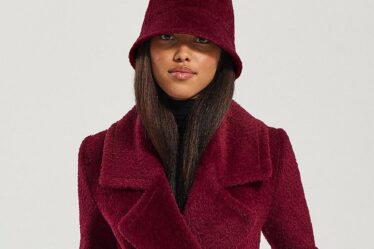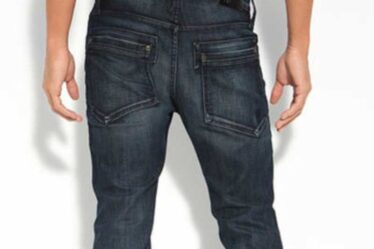
Oily hair is a pesky problem. One minute, you’ve got squeaky clean strands that look like they’ve just been blown dry. The next, your hair feels limp and grimy with a touch of static. It’s a challenging condition that can make hair difficult to style and uncomfortable to touch. Fortunately, no matter how prone your hair is to oiliness, it doesn’t have to stay this way. Keep reading to hear from salon pros about the haircare, styling, and maintenance mistakes that cause oily hair—and the techniques you can use to avoid it. Soon you’ll be able to put that bottle of dry shampoo away and focus your attention on voluminous, oil-free locks.
READ THIS NEXT: How to Embrace Keeping Your Hair Long After 50.
Somewhat surprisingly, shampooing your hair too frequently can cause it to become more naturally oily. “The reason why this happens is you are over-stimulating the sebaceous gland, meaning you are producing more oil than needed,” says Antonio Juarez, a hairstylist at Fabio Scalia salons in New York City. This stimulation is caused by the massaging technique you use when you lather your shampoo.
“What can be done instead is shampooing every other day or two times a week, on days where your hair feels oily,” says Juarez. In between, he suggests rinsing the hair without shampoo and applying conditioner only. “A highly recommended shampoo for addressing oily roots is Kerastase’s Specifique line,” he adds.
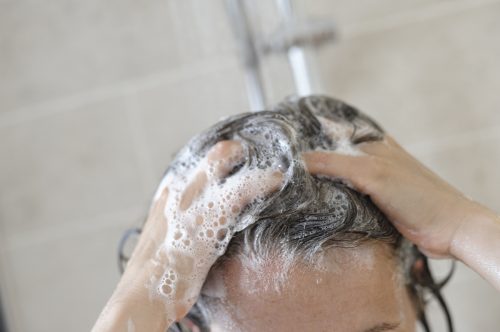
Shampooing the hair properly is more involved than you might think. First off, you’ll want to implement the practice of a double cleanse. “The first shampoo should focus on removing product buildup,” says Juarez. “Use your fingertips and work all throughout the scalp.”
Then, add a bit of water and add a second dollop of shampoo. This cleanse should lather more fully, ensuring your strands get clean from root to tip. “Fully rinse the shampoo, apply conditioner from mid-length to ends, and rinse it all out,” says Juarez. Use dry shampoo as needed to extend the life of your blow dry.
READ THIS NEXT: If You’re Letting Your Hair Go Gray, Do This First, Experts Say.
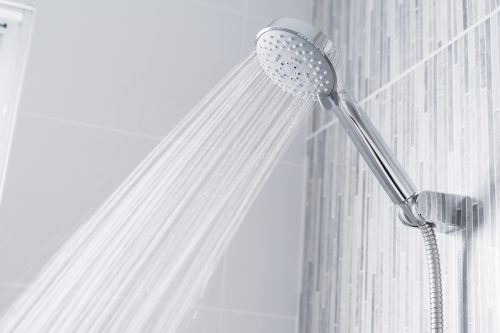
The temperature of your shower could also impact your hair’s oiliness or lack thereof. “It’s important to not use water that’s too hot when washing your hair as it will strip the natural oils off the cuticle and the scalp will replace it immediately, leaving hair greasy,” says Gökhan Vayni, hair specialist at Vera Clinic.
What’s more, rinsing with cool water can also add shine. “Cold water is beneficial for hair as it seals the cuticle and locks in the moisture from your conditioner, leaving your hair extra hydrated, frizz-free, and shiny,” Vayni explains.
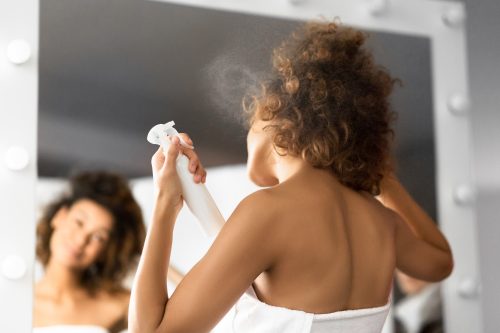
If you have naturally oily hair, you should take a less-is-more approach to styling products. “When you use different hair products while styling your hair, such as hair gel, oil, and pomade, it can lead to product build-up, which is the prime reason it gets oily much sooner,” says Vayni. “Only use hair styling products when necessary to prevent having to wash hair after usage.”
Juarez offers another pro tip: Only use one styling product at a time and never apply it to the scalp; instead, stick to the mid-lengths only. “Always apply a little to start, and add more if needed,” he notes.
For more beauty advice delivered straight to your inbox, sign up for our daily newsletter.

Your scalp produces oil naturally, and so do your fingertips. “One thing my clients might find surprising that contributes to an oily scalp is touching their hair constantly throughout the day,” says Juarez. This is because the oil on your fingers transfers to your hair, leaving it greasier than it was before that hair flip (if only in a subtle way). Once you’ve got things styled, avoid touching your strands. By day one, two, or three after your shampoo, your oil-free locks will thank you for it.

